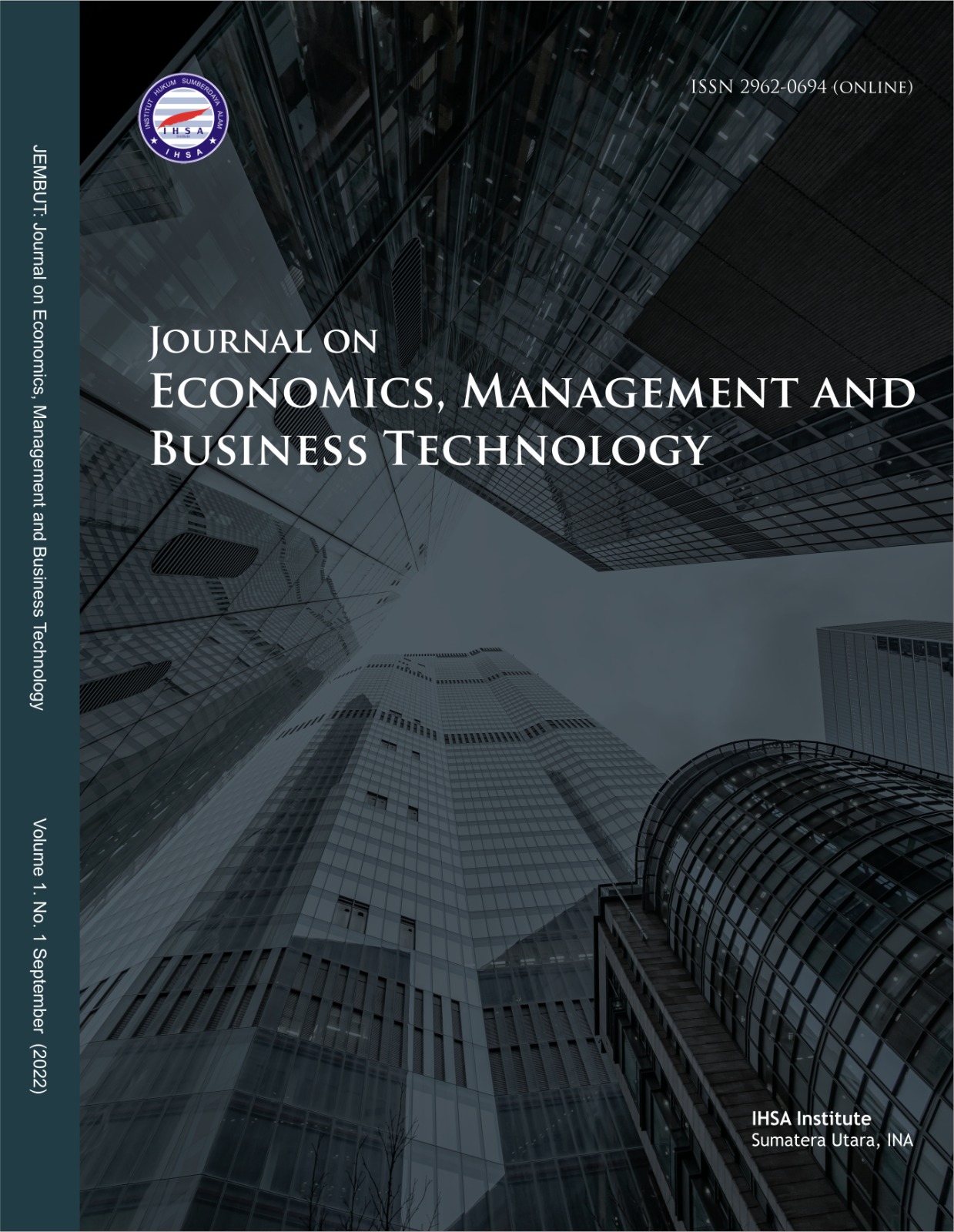Analysis of Business Development Strategies in Increasing Customer Trust
DOI:
https://doi.org/10.35335/jembut.v2i2.209Keywords:
Customer Trust, Business Development Strategies, Customer-Centric Practices, Transparency and Ethical ConductAbstract
This research investigates the pivotal role of business development strategies in increasing customer trust within contemporary market environments. Through a comprehensive analysis of data collected using a mixed-methods approach, the study examines the efficacy of various strategies, including customer-centricity, transparency, and ethical conduct, in fostering trust-based relationships. Findings reveal that businesses that prioritize customer-centric practices, transparency in communication, and ethical conduct are more successful in cultivating trust among their customers. These insights are aligned with existing theoretical frameworks such as social exchange theory, the service quality model, and trust-commitment theory, contributing to theory development in the field of trust-based relationship management. Practical implications derived from the analysis offer actionable recommendations for businesses seeking to enhance customer trust through strategic initiatives, emphasizing the importance of aligning strategies with trust-building imperatives, integrating trust-building principles into organizational culture and operations, and continuously monitoring and adapting approaches. Overall, this research underscores the significance of trust as a fundamental driver of organizational success, highlighting its role as a catalyst for fostering enduring relationships with customers and driving long-term value creation.
References
Abramova, O., Shavanova, T., Fuhrer, A., Krasnova, H., & Buxmann, P. (2015). Understanding the sharing economy: The role of response to negative reviews in the peer-to-peer accommodation sharing network.
Albert, M. G., Thompson, G. A., & Barth, T. H. (2020). Military Authorizations in a Connected World: The Department of Defense’s Role in Influence Operations.
Alcazar, C. V. (2017). Data you can trust. Air and Space Power Journal, 31(2), 91–101.
Bahrami, H. (2009). The emerging flexible organization: Perspectives from Silicon Valley. In Knowledge management and organisational design (pp. 55–75). Routledge.
Bebbington, J. (2001). Sustainable development: a review of the international development, business and accounting literature. Accounting Forum, 25(2), 128–157.
Beckmann, M., Hielscher, S., & Pies, I. (2014). Commitment strategies for sustainability: How business firms can transform trade‐offs into win–win outcomes. Business Strategy and the Environment, 23(1), 18–37.
Berry, L. L., & Parasuraman, A. (2004). Marketing services: Competing through quality. Simon and Schuster.
Bockstedt, J., & Goh, K. H. (2011). Seller strategies for differentiation in highly competitive online auction markets. Journal of Management Information Systems, 28(3), 235–268.
Boyd, D. E., Spekman, R. E., Kamauff, J. W., & Werhane, P. (2007). Corporate social responsibility in global supply chains: A procedural justice perspective. Long Range Planning, 40(3), 341–356.
De Janasz, S. C., Sullivan, S. E., & Whiting, V. (2003). Mentor networks and career success: Lessons for turbulent times. Academy of Management Perspectives, 17(4), 78–91.
Fang, E., Palmatier, R. W., & Grewal, R. (2011). Effects of customer and innovation asset configuration strategies on firm performance. Journal of Marketing Research, 48(3), 587–602.
Fiksel, J., & Fiksel, J. R. (2015). Resilient by design: Creating businesses that adapt and flourish in a changing world. Island Press.
Gonring, M. P. (2008). Customer loyalty and employee engagement: an alignment for value. Journal of Business Strategy, 29(4), 29–40.
Gulati, R. (2010). Reorganize for resilience: Putting customers at the center of your business. Harvard Business Press.
Kim, D. J., Ferrin, D. L., & Rao, H. R. (2008). A trust-based consumer decision-making model in electronic commerce: The role of trust, perceived risk, and their antecedents. Decision Support Systems, 44(2), 544–564.
Kotler, P., Jain, D., & Maesincee, S. (2002). Marketing moves: a new approach to profits, growth, and renewal. Harvard Business Press.
Laufer, W. S. (2003). Social accountability and corporate greenwashing. Journal of Business Ethics, 43, 253–261.
Lefebvre, J. M., & Shiba, S. (2005). Collaboration and trust in the supply chain: The case of FAVI SA. Supply Chain Forum: An International Journal, 6(2), 90–95.
Luthans, F. (2011). Organizational behavior: An evidence-based approach. McGraw-Hill/Irwin.
Park, C. W., MacInnis, D. J., & Eisingerich, A. B. (2016). Brand admiration: Building a business people love. John Wiley & Sons.
Seville, E. (2016). Resilient organizations: How to survive, thrive and create opportunities through crisis and change. Kogan Page Publishers.
Shankar, V., Urban, G. L., & Sultan, F. (2002). Online trust: a stakeholder perspective, concepts, implications, and future directions. The Journal of Strategic Information Systems, 11(3–4), 325–344.
Shin, S. K. S., Amenuvor, F. E., Basilisco, R., & Owusu-Antwi, K. (2019). Brand trust and brand loyalty: A moderation and mediation perspective.
Singh, J., & Sirdeshmukh, D. (2000). Agency and trust mechanisms in consumer satisfaction and loyalty judgments. Journal of the Academy of Marketing Science, 28, 150–167.
Stewart, R. E., & Stewart, B. D. (2001). The loss of the certainty effect. Risk Management and Insurance Review, 4(2), 29–49.
Tapscott, D., & Ticoll, D. (2003). The naked corporation: How the age of transparency will revolutionize business. Simon and Schuster.
Treadgold, A., & Reynolds, J. (2020). Navigating the new retail landscape: A guide for business leaders. Oxford university press.
Worthington Jr, E. L. (2009). Forgiving and reconciling: Bridges to wholeness and hope. InterVarsity Press.
Yarrow, K. (2014). Decoding the new consumer mind: how and why we shop and buy. John Wiley & Sons.
Downloads
Published
Issue
Section
License
Copyright (c) 2024 Leonardo Sihombing, Herman Dinus

This work is licensed under a Creative Commons Attribution-ShareAlike 4.0 International License.



